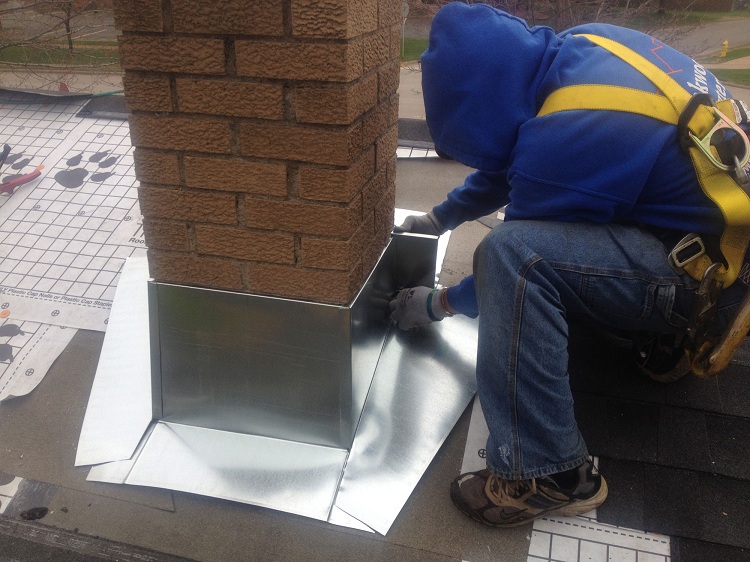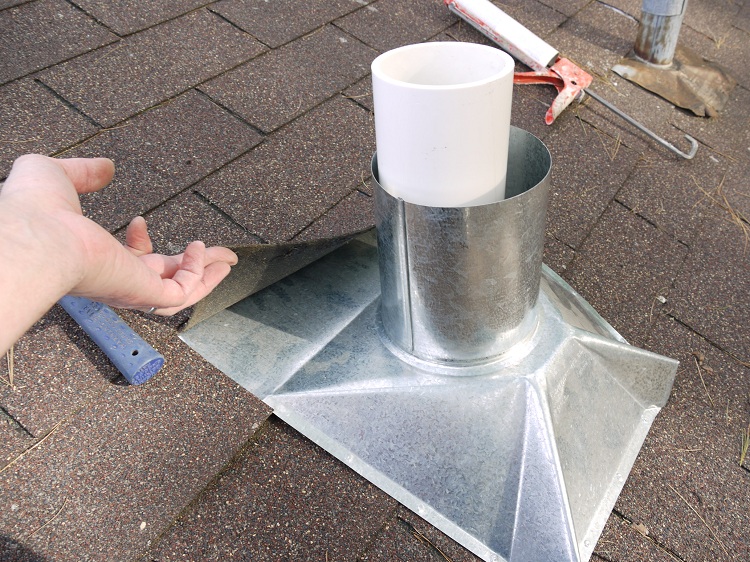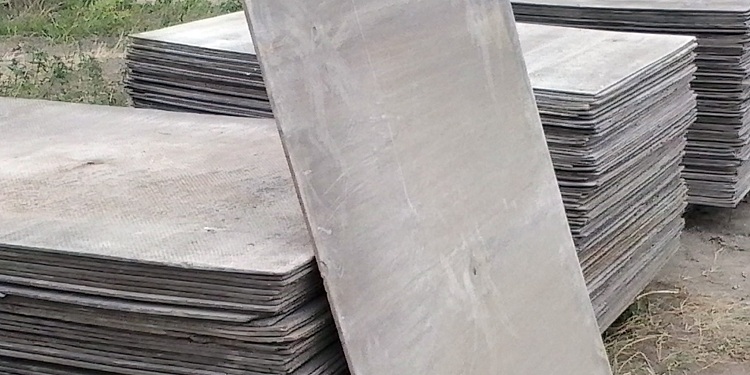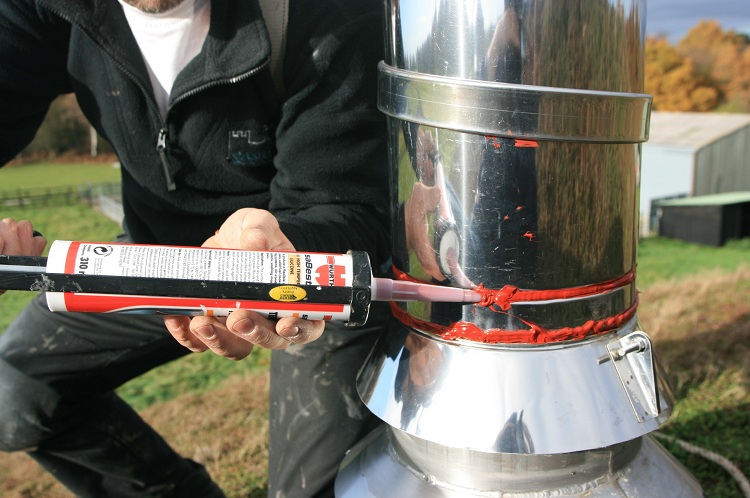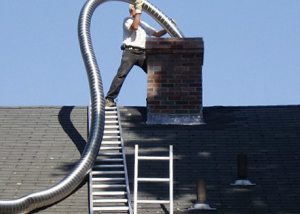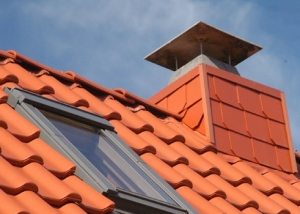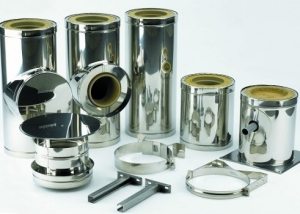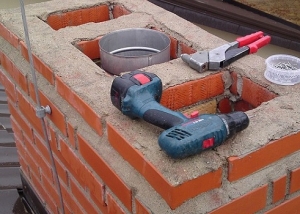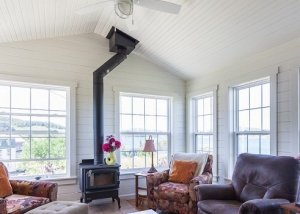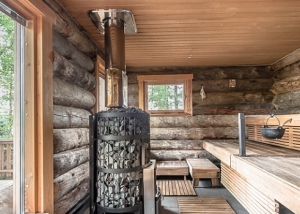Sealing the chimney on the roof is a problem that must be faced, providing normal conditions for any building equipped with a furnace. This can be a house, a bathhouse, a production or utility room. Inadequately carried out sealing will result in the formation of condensate on the walls of the pipe. The condensate evaporating during heating will degrade the draft, increase the pressure, which can lead to cracking and even destruction of the pipe.
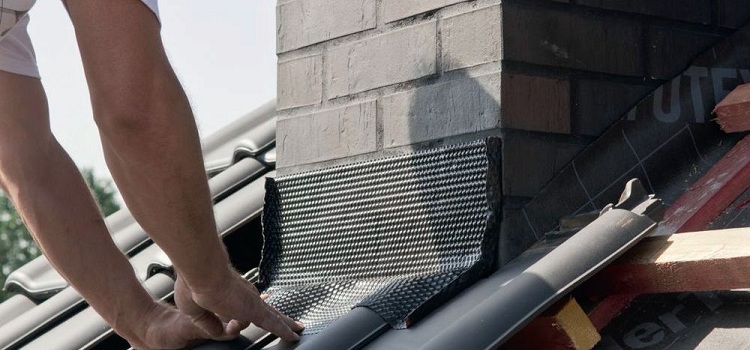
The sealing of the chimney is carried out in different materials and ways, depending on the type of roof and the type of chimney
Content
- 1 Why waterproof the chimney
- 2 Installation of a chimney according to fire safety rules
- 3 Where to start waterproofing
- 4 How to waterproof
- 5 Sealing Materials
- 6 Closing a square pipe on a slate roof
- 7 Sealing round multilayer chimneys
- 8 Sealing of a square pipe on the roof of a metal tile, ondulin, corrugated board
Why waterproof the chimney
Installing a chimney on the roof violates its tightness, creates problems with waterproofing the roof.
Through the chimney exhaust waste products are removed that maintain a sufficiently high temperature. The walls of the chimney are heated and almost instantly evaporate the cold atmospheric moisture that enters them. Evaporation creates additional pressure. It is undesirable, as it interferes with normal traction. The influence of additional pressure can even lead to the destruction of the chimney.
It's important to know! The occurrence of a sharp temperature difference also leads to the formation of condensate on the inner walls of the pipe. Accumulating condensate flows down, steam pressure is created.
Properly waterproofing avoids the described adverse events. The operation of the heating devices will proceed in accordance with the declared parameters, without deterioration. There will be no drop in heat transfer. The uniformity of the heating process will allow you to easily evaporate the condensate and remove it into the atmosphere with smoke.
Installation of a chimney according to fire safety rules
The removal of exhaust combustion products through the chimney pipe should be carried out in compliance with fire safety rules. Furnace gases may well lead to the ignition of the roof, especially its wooden supporting structures.
To avoid ignition:
- building standards regulate the size of the gap, which is mandatory left between the pipe and the roof elements, subject to ignition;
- this site is treated with materials that contribute to reducing the risk, for example, asbestos;
- the part of the chimney passing through the roofing cake is made, as usual, in the form of a duct using galvanized metal. The space between the inner wall of the duct and the pipe is filled with non-combustible materials.
Modern roofing technology allows you to install the chimney passage on the ridge or roof slope. Previously, such a installation on the roof ridge required corresponding changes in the rafter system, and installation on the roof slope could turn into a pocket accumulating snow in winter.Modern insulating materials can easily be placed under the ridge strip, eliminating the possibility of leakage.
Where to start waterproofing
The safety of heating devices is largely determined by the correct waterproofing during the cutting of the pipe on the roof. Carrying out this operation take into account that:
- Whatever the roofing, it is necessary to maintain a certain distance between the rafter system and the roof. If the roof is laid of non-combustible materials - 10-25 cm, if of combustibles - 15-30 cm;
- the construction of a complex roofing cake, including layers of waterproofing, insulation and vapor barrier, should not be violated. Moisture inside the roofing pie will destroy it. The insulating layers that make up the roofing cake, due to their combustibility, must be separated from the chimney by a gap;
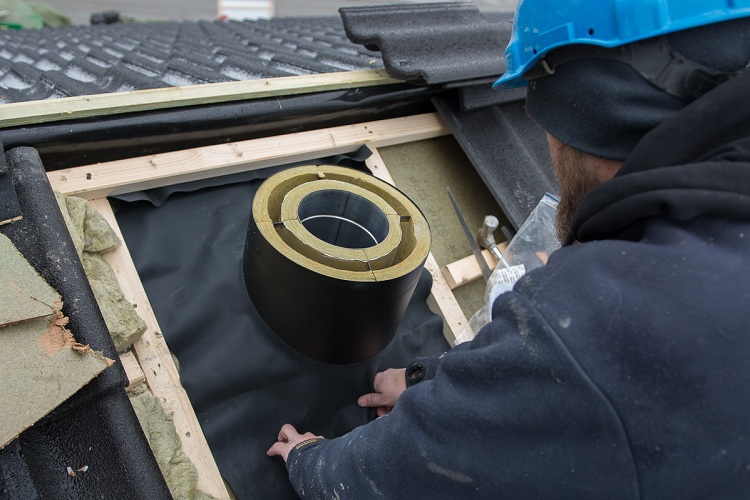
When installing the chimney, you should make sure that there is a gap between the pipe and the roof, which is filled with insulating materials
- the gap is arranged by installing a duct that will separate the pipe from the roof. The distance between the inner wall of the duct and the pipe is about 15 cm. The inner space of the duct is filled with non-combustible heat-insulating materials.
Insulating films in the roofing pie are cut with an “envelope”, pulled up to the transverse beam and rafters and attached with nails. The waterproofing is pressed by the crate, the vapor barrier is fixed using a special frame. The joints of the box and the insulating layers of the roofing pie are edged with special tapes.
How to waterproof
Leakage on the roof, which appeared near the chimney, is usually associated with poor-quality sealing of the roof. Insulation aprons are installed to prevent leakage. Their installation is carried out in the following order:
- To remove moisture from the chimney, a drainage chute is placed in the waterproofing layer above the chimney;
- Complete tightness of the joint between the roofing and the chimney is ensured by the installation of an internal apron.
- From the waterproofing material, a substrate is cut out, placed under the lower edge of the inner apron. The edge of such a “tie”, if the roof is made of metal tile or slate, is displayed on its surface between the lower sheets. Using pliers, a side is created at the edges of the structure, designed to direct water down the ramp.
- The roof covering is laid around the pipe.
- An external decorative apron is installed on top of the roof. The only difference from installing the inner apron is fixing the top edge directly to the pipe wall.
- An insulating apron is made either independently, or a roof pass made by an industrial method is purchased. Its base is a steel sheet on which an apron in the form of a cap is mounted. A chimney is passed inside the apron.
Sealing Materials
Materials that can successfully seal a pipe on the roof are divided into three types:
1. Vata. It is produced in the form of rolls or shredded, with shortened mullite-siliceous fibers. It is different:
- high heat resistance;
- low thermal conductivity and low heat capacity;
- chemical resistance;
- resistance to vibration, deformation, thermal shock;
- low density and elasticity;
- tight fit to structures;
- fire resistance;
- good electrical and sound insulation.
2. Roll filters. They are made of fibers, including mullite-siliceous composition. They are flexible, easy to cut with a knife. They are easy to fix by mechanical fastening or using inorganic glue.
3. Asbestos or kaolin plates. Also made of mullite-siliceous fiber.They exhibit stability when exposed to alkalis and acids, but at high temperature additional isolation of the material from the effects of highly concentrated acid or alkali is required. Kaolin and asbestos plates differ:
- resistance to water, steam, mineral oils;
- resistance to the effects of non-ferrous metal melts;
- low thermal conductivity;
- elasticity and low density;
- low thermal conductivity;
- good soundproofing;
- preservation of electrical insulation properties at a temperature of 700-800º C;
- resistant to vibrations and deformations.
Closing a square pipe on a slate roof
Traditionally, a brick chimney on a slate roof was tightened by creating a thickening at the roof level. Slate does not allow the use of special parts for insulation, so it is achieved by arranging a cement-sand apron:
- The gaps between the pipe and the roof are overlapped by the gateways. They are made of strips of galvanized steel, adjacent partly to a brick pipe, and the other part to a slate ..
- The steel salary is poured with cement-sand mortar rising above the roof level. When using a cardboard cylinder, filling is easy.
- To divert water, an inclined ledge is constructed from the side of the ridge.
Sometimes the gap between the pipe and the roof is blocked by a cardboard cylinder wrapped in plastic film, and the side of the drain is molded from plasticine. In this case, after the solidified asbestos-cement mortar has hardened, the cylinder and the sides are removed.
Note! Such a design is unlikely to produce an aesthetic impression, but it will provide tightness.
Sealing round multilayer chimneys
Sealing a modern round chimney is facilitated by the fact that the pipe is equipped with the necessary devices. The finished apron-cap consists of a metal sheet with an opening that is closed by a truncated cone of the cap inclined to the sheet. Installation is as follows:
- After making a hole in the waterproofing, stick the edge of the material to the previously pre-primed pipe to increase the adhesive properties of the material with mastic.
- The sheet is attached to the crate, the pipe is passed through the cap. The joint of the cap and the walls is blocked by a steel clamp equipped with a heat-resistant gasket.
In addition to metal aprons, caps, it is possible to use a special flexible flexible pipe termination. Flexible chimney sealant can be used to insulate any additional elements on roofs.
Sealing of a square pipe on the roof of a metal tile, ondulin, corrugated board
On roofs made of metal or corrugated board, sealing strips are used for sealing.
The waterproofing membrane in the area where the installation of the chimney is carried out is cut and partially removed. The rest of the waterproofing is attached to the walls of the pipe, overlapping them by 5-10 cm. The membrane is glued to the walls with bitumen mastic.
The metal apron around the chimney is assembled from the outer and lower abutment strips. The external contiguity strip is filled with sealant for the chimney pipe.
Important! Laying an apron under the metal tile, the lower and side elements made of smooth metal are placed under the roofing material, the upper element - under the ridge, using seals and sealant.
Roofing material is manually laid on top, joints are treated with sealant.
When working on the ondulin roof, after fixing the waterproofing film, lower and upper ties are formed from metal corners. The design is covered with sheets of ondulin, an apron is installed on top. Bitumen mastic is used to process joints.
